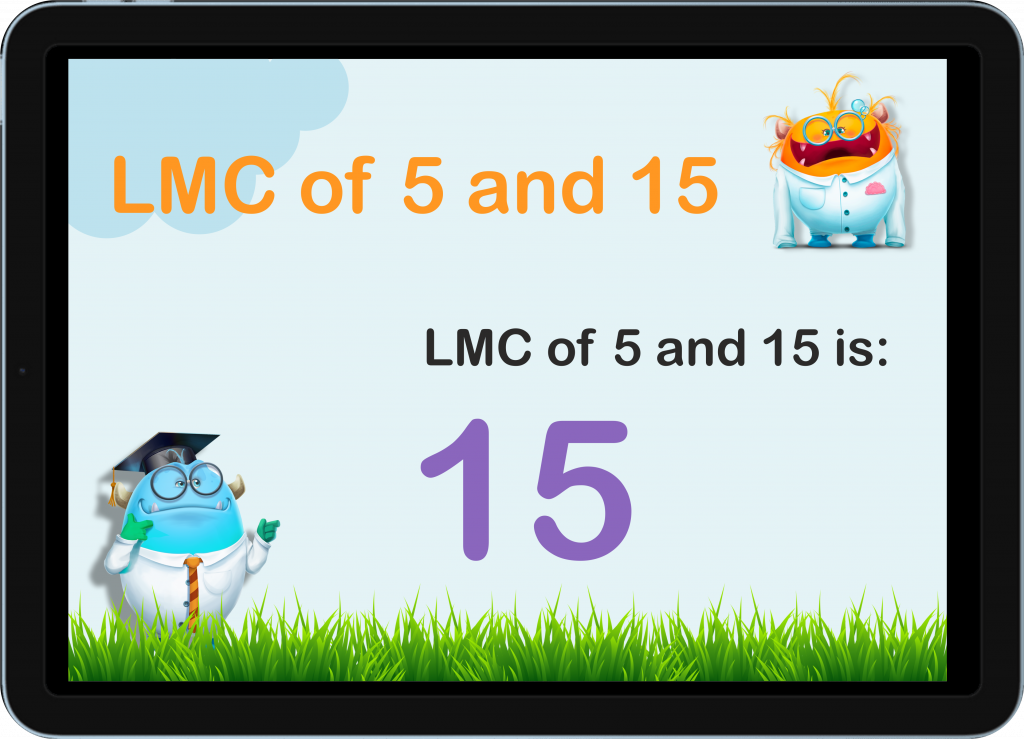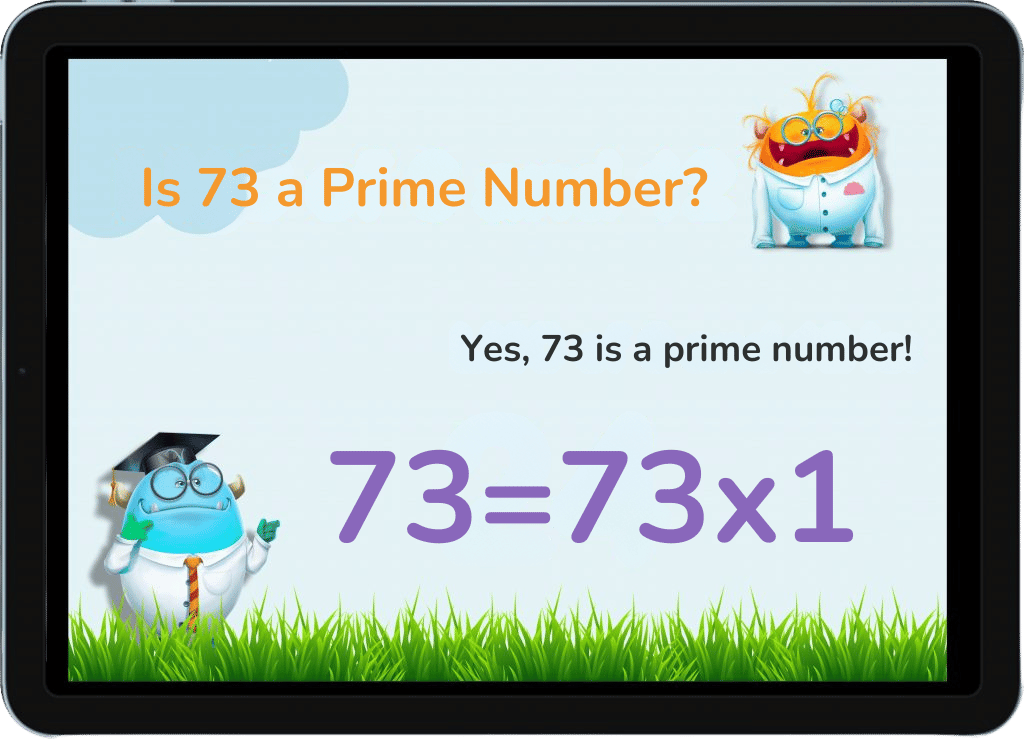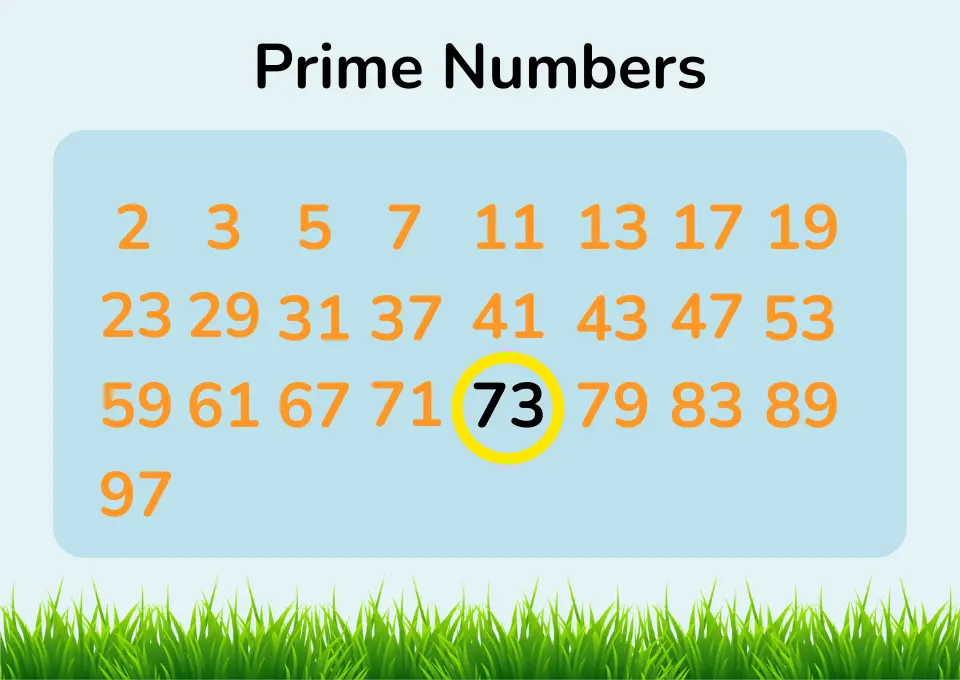Is 2 A Prime Number?
Prime vs. Composite Numbers
Greetings, young math enthusiasts! Today, let’s set sail on a mathematical voyage to determine if 2 is a prime number, and learn more about the difference between prime and composite numbers.

Is 73 a Prime Number?
Or Is 73 a Composite Number?


No credit card required

No credit card required
What Makes a Number a Prime Number?
Is 73 a Prime Number?
How to Determine if 73 is a Prime Number
How is 73 a Prime Number?
Prime Factorization of 73
Fun Facts About 73 Prime Number
Is 73 a Twin Prime Number?
Is 73 a Cousin Prime Number?
Is 73 a Sexy Prime Number?
Is 73 a Composite Number?
What Makes a Number a Prime Number?
Numbers can be mysterious and fascinating, especially when you learn about prime numbers. A prime number is a number that can only be divided evenly by 1 and itself. This means that when you try to divide it by any other number, you’ll always get a remainder.
Prime numbers are like special treasures in math because they don’t fit in with the crowd of other numbers that can be divided in many different ways.
Is 73 a Prime Number?

Now, let’s talk about the number 73. It might look like an ordinary number, but it has something special about it. Yes, 73 is a prime number. But how do we know this? What makes 73 stand out in the world of numbers?
How to Determine if Number is a Prime Number?
Determining whether a number is prime involves a systematic method:
- Check for Divisibility by 2: If the number is even, it is not prime (except for 2).
- Check for Divisibility by 3: Add the digits of the number. If the sum is divisible by 3, the number is also divisible by 3.
- Check for Divisibility by 5: If the number ends in 0 or 5, it is divisible by 5.
- Test Other Primes Up to the Square Root: Check divisibility by 7, 11, 13, and other primes up to the square root of the number.
By following these steps, one can verify that a number is prime if it is not divisible by any number other than 1 and itself.
How is 73 a Prime Number?
Finding out if a number is prime can be like solving a fun puzzle. Here’s how you can do it:
- Divisibility by 2: Check if the number is even. If it is, and it’s not 2, then it’s not prime. Since 73 is odd, it’s not divisible by 2.
- Divisibility by 3: Add up the digits of the number. If the sum is divisible by 3, then the number is too. For 73, 7 + 3 equals 10, which isn’t divisible by 3.
- Divisibility by 5: Check if the number ends in 0 or 5. If it does, it’s divisible by 5. Since 73 ends in 3, it’s not divisible by 5.
- Check Other Primes: Continue checking divisibility by prime numbers up to the square root of 73 (about 8.5). You’ll see that none of them divide 73 without leaving a remainder.
By following these steps, you’ll find that 73 is indeed a prime number.
Prime Factorization of 73
Prime factorization is breaking down a number into its prime components. For some numbers, this can be a long process, but for 73, it’s quite simple. Since 73 is a prime number, it can only be written as 73 itself:
73=731
There are no other factors involved, making this straightforward and easy to remember.
What is So Special About Number 73?
- 73 is the 21st prime number: This sequence places it in a unique spot among other prime numbers.
- Digit Reversal: If you reverse the digits of 73, you get 37, which is also a prime number.
- Binary Palindrome: In binary code, 73 is written as 1001001, which reads the same backward, making it a palindrome in the binary system.
- Sheldon Prime: Named after the character Sheldon Cooper from the TV show The Big Bang Theory, who called it the best number.
- Largest Minimal Primitive Root: 73 is the largest minimal primitive root in the first 100,000 primes.
- Sierpiński Numbers: Both 37 and 73 belong to the set of Sierpiński numbers.
Is 73 a Twin Prime Number?
Twin primes are pairs of prime numbers that are only two numbers apart. For example, 11 and 13 are twin primes. Now, let’s see if 73 has a twin. If we look at the numbers around 73, we find that 71 is also a prime number. Therefore, 73 and 71 form a pair of twin primes.
Is 73 a Cousin Prime Number?
Cousin primes are pairs of prime numbers that are four numbers apart. To see if 73 is a cousin prime, we look at the number 77, which is four numbers away from 73. However, 77 is not a prime number, as it can be divided by 7 and 11. Therefore, 73 does not have a cousin prime in this case.
Is 73 a Sexy Prime Number?
Sexy primes are pairs of prime numbers that are six numbers apart. To check if 73 is part of a sexy prime pair, we look at the numbers 67 and 79. Both 67 and 79 are prime numbers, making 73 part of two sexy prime pairs: (67, 73) and (73, 79).
Is 73 a Composite Number?
No, 73 is not a composite number. A composite number has more than two divisors, whereas 73 can only be divided evenly by 1 and itself. This makes 73 a prime number, not a composite one.
Conclusion
The number 73 is fascinating in many ways. It’s a prime number that stands out with its unique properties and interesting characteristics.
By understanding what makes 73 a prime number, we can appreciate the special place it holds in the world of mathematics. Whether it’s finding twin primes, cousin primes, or sexy primes, 73 has a lot of exciting stories to tell.
So next time you see the number 73, remember its prime status and the interesting journey it takes in the world of numbers.
Learn More About Prime Numbers
© 2024 Smartick. All Rights Reserved.
